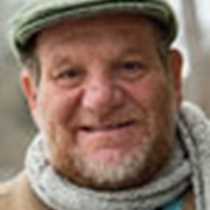Fog blankets the forest as we walk silently through the cathedral of old growth. We are in a scared place, a place where the trees tell the story of the people who once lived and thrived here. Today, we recognize the significance of the culture of the people who would walk these trails, fish these waters, and sit around warming fires passing down the stories of the ones that went before. In times past, during the first contact with Europeans, small pox, nearly wiped out not just the people here, but native people up and down the cost of British Columbia. We are at Sgang Gwaay, a world heritage site, located on Ninstints Island, in Gwaii Haanas National Park, on one of the more than 400 islands known as Haida Gwaii. This is an especially important place, Sgang Gwaay is the one of the best examples of life as the Haida knew it before contact. The middens, house pits, and the many poles both fallen and upright tell the story of the people who lived here on the rich bounty that surrounding sea provided them.
The Haida say that the sprits of the ancestors still reside here, and it is easy to imagine their presence as we learn about the mortuary poles from the Watchmen who are our guides. The Watchmen, as with all of the Haida we have met, have a special reverence for the past. Small pox reduced the number of Haida from many thousands, to only one thousand people. Then in an effort to acclimate the remaining people, regulations hostile to the Haida reduced the population to only about 600 individuals. Remarkably, the Haiida culture is in a time of revitalization. It is evident in their art, but it is more evident in the way the people talk about their culture, both the past and the present. Nowhere is that more evident than here at Sgang Gwaay. The last site of consolidation of Haida from other southern villages, it is a place of pride, a place of respect, and a place of remembrance. The history of the Haida is evident in the remains of the longhouses in the village, and canoe runs on the beach. Most of the Haida are gone, but those who guide us through this sacred place once again pass down their stories not just to us, but to the next generations of Haida, insuring that the Haida still have a voice, still have a presence.
The Haida say, Haida Gwaii is not only where we are, it is who we are.









